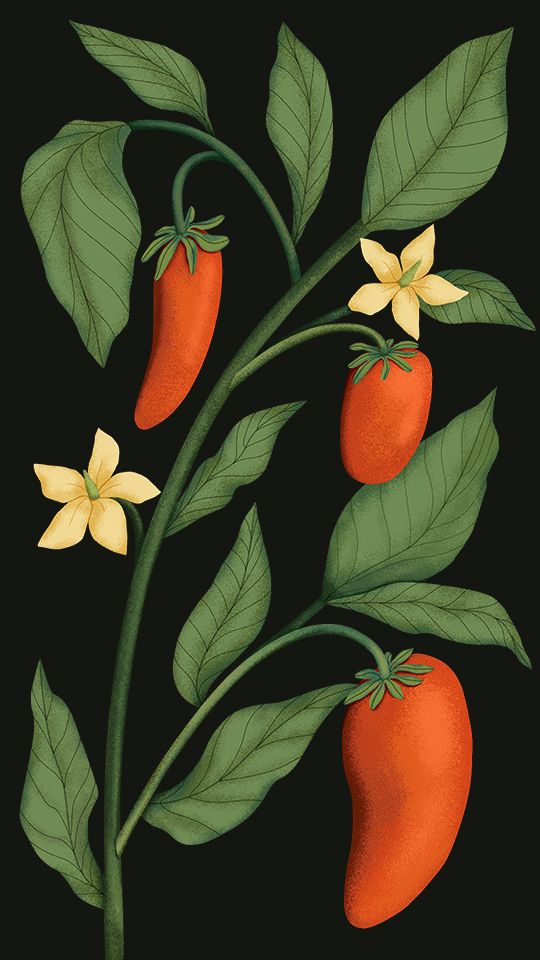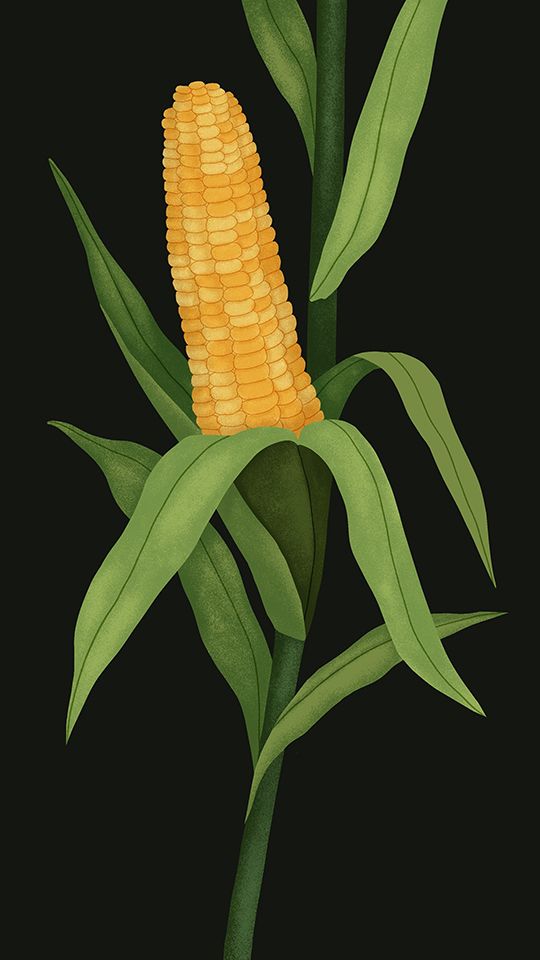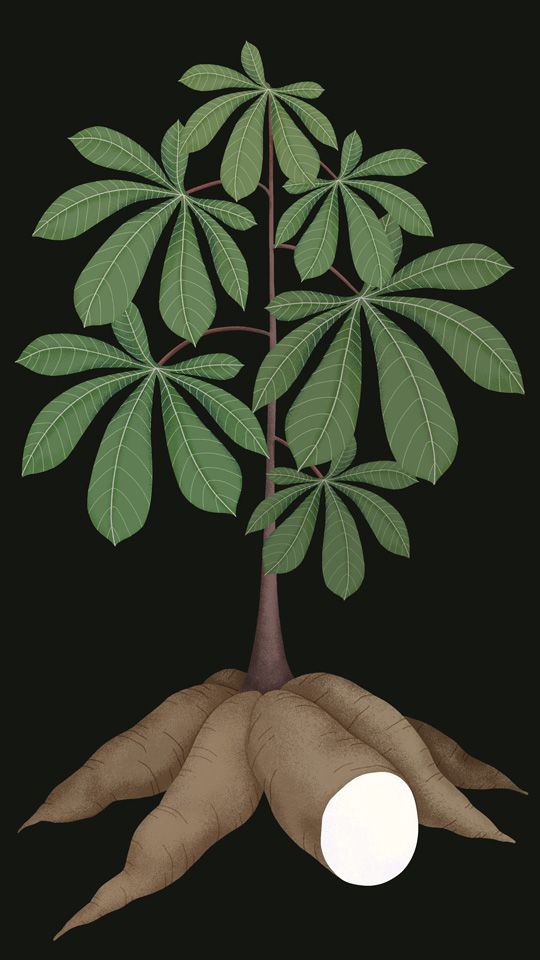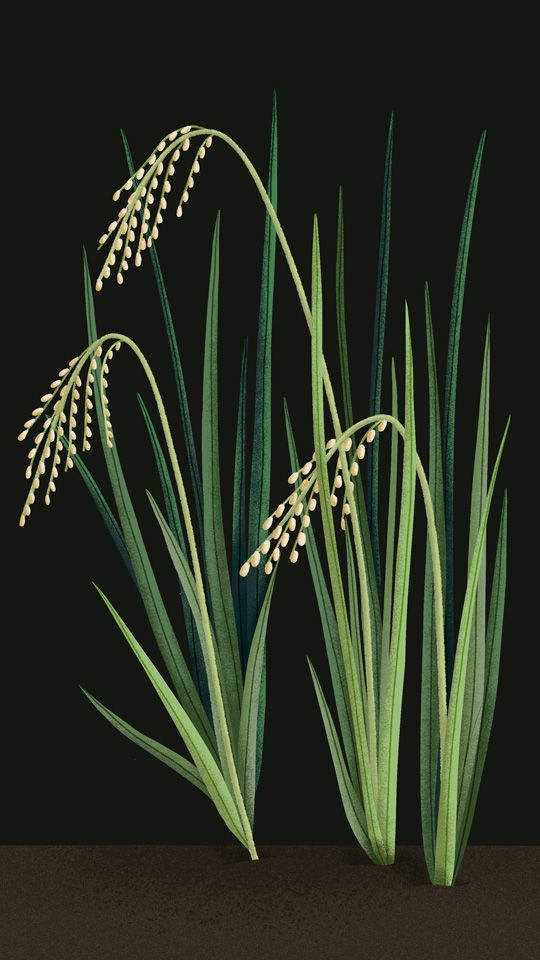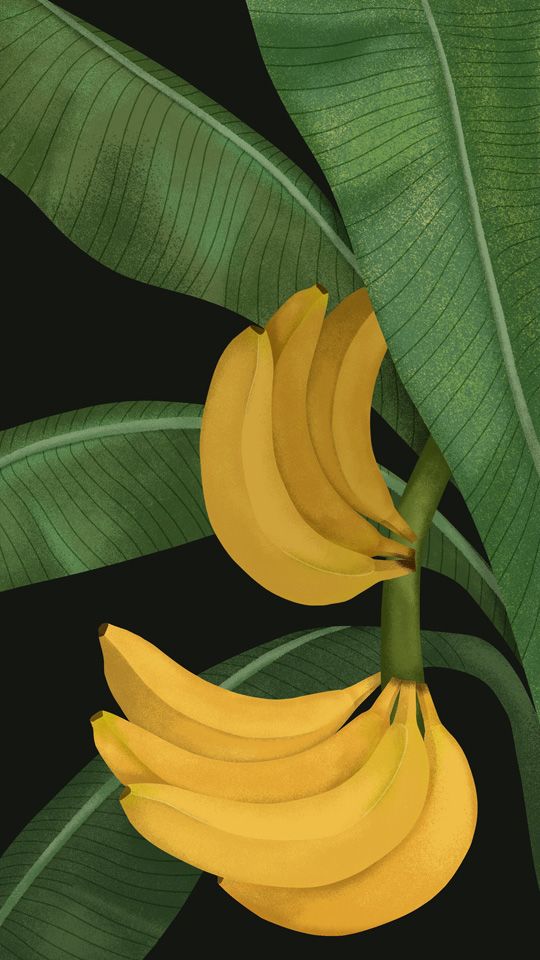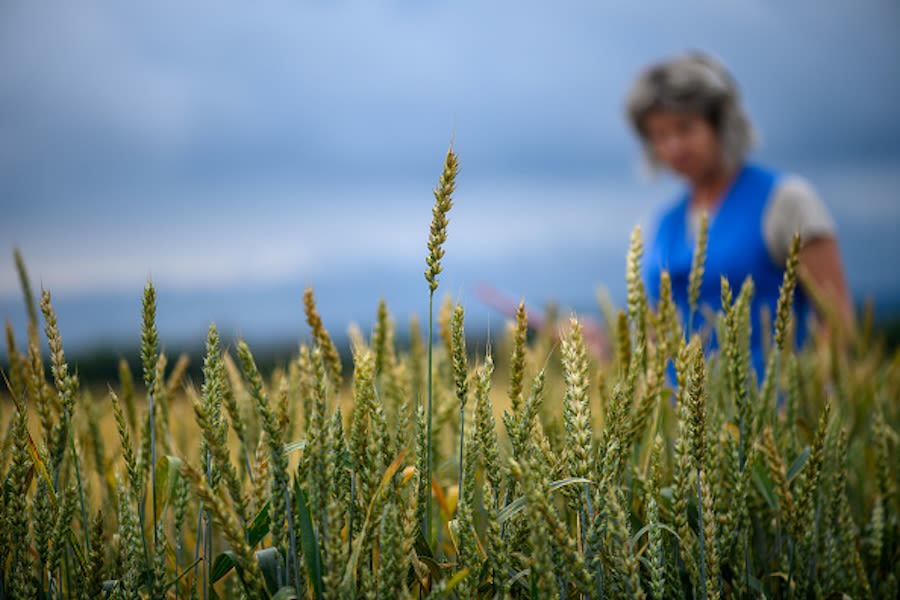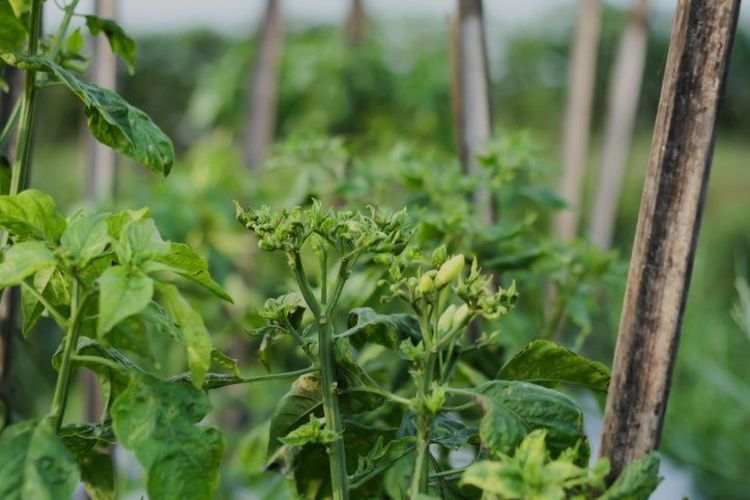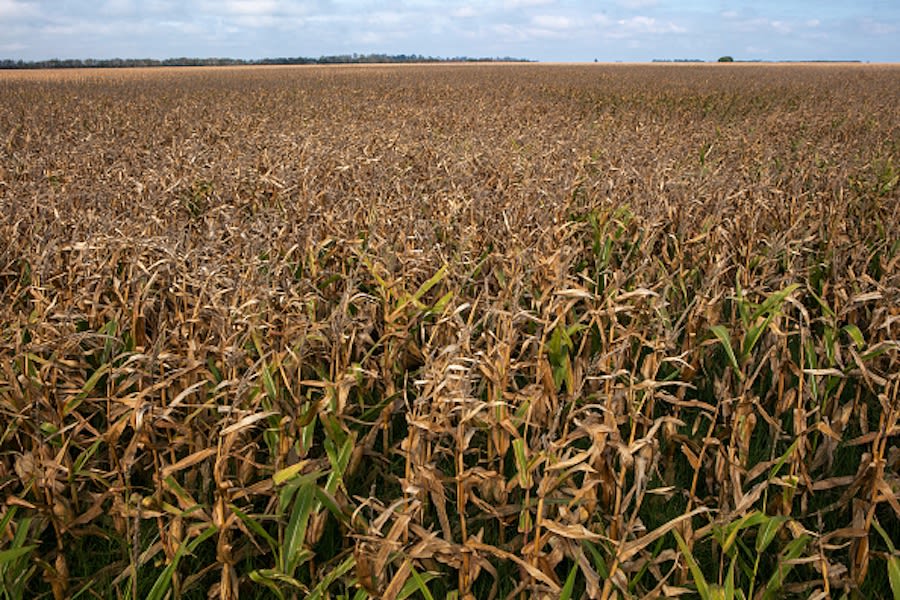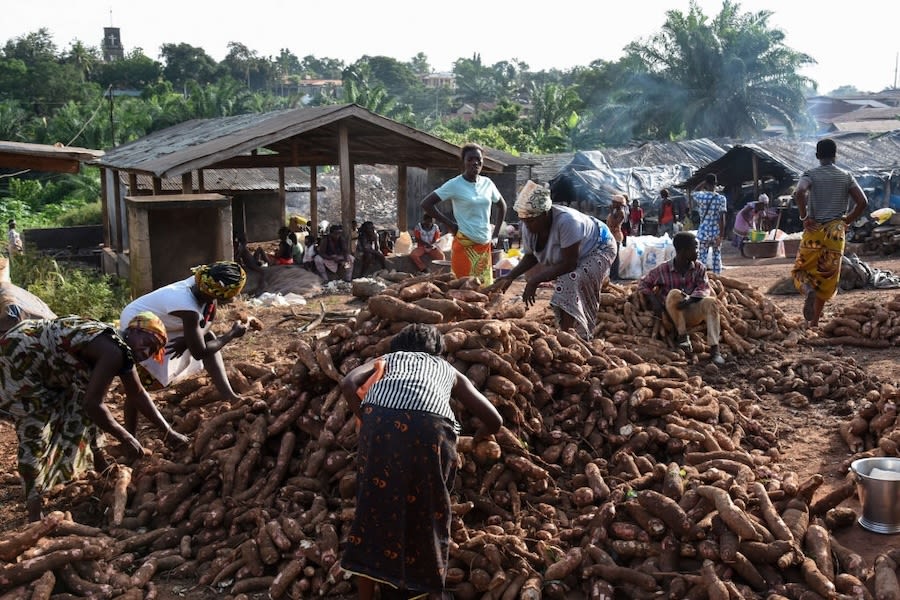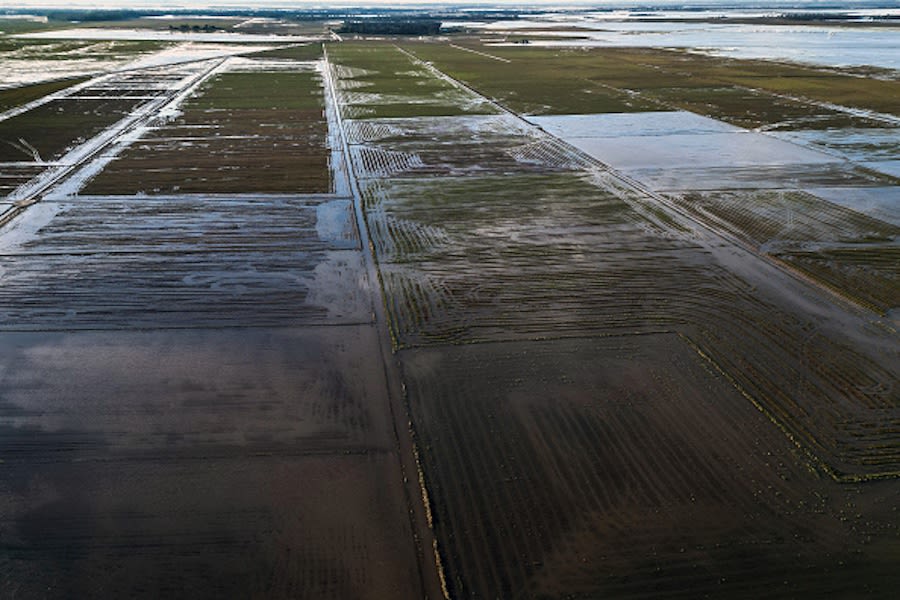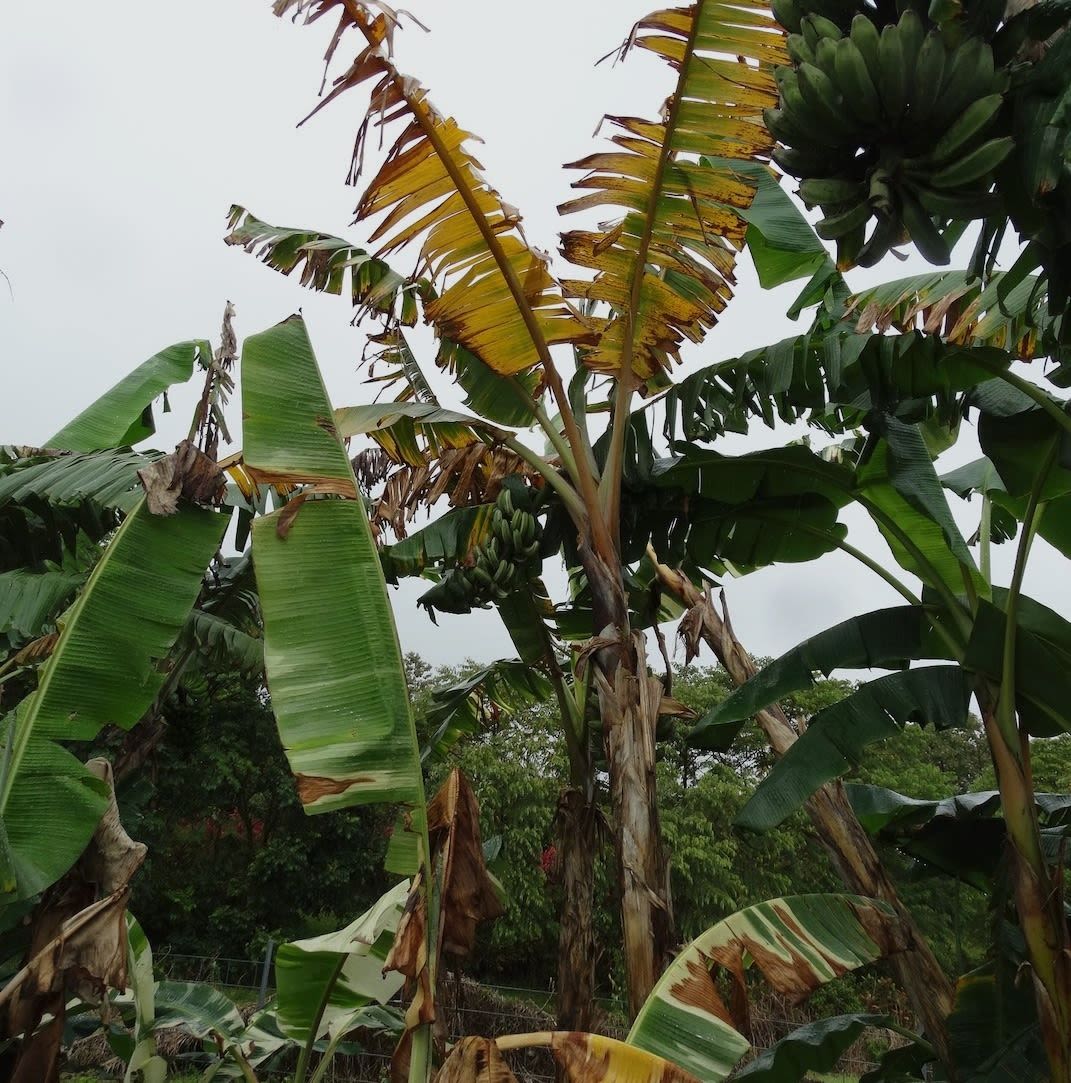Just before the turn of the twenty-first century, a new strain of wheat stem rust emerged that posed an existential threat to global agriculture.

Just before the turn of the twenty-first century, a new strain of wheat stem rust emerged that posed an existential threat to global agriculture.

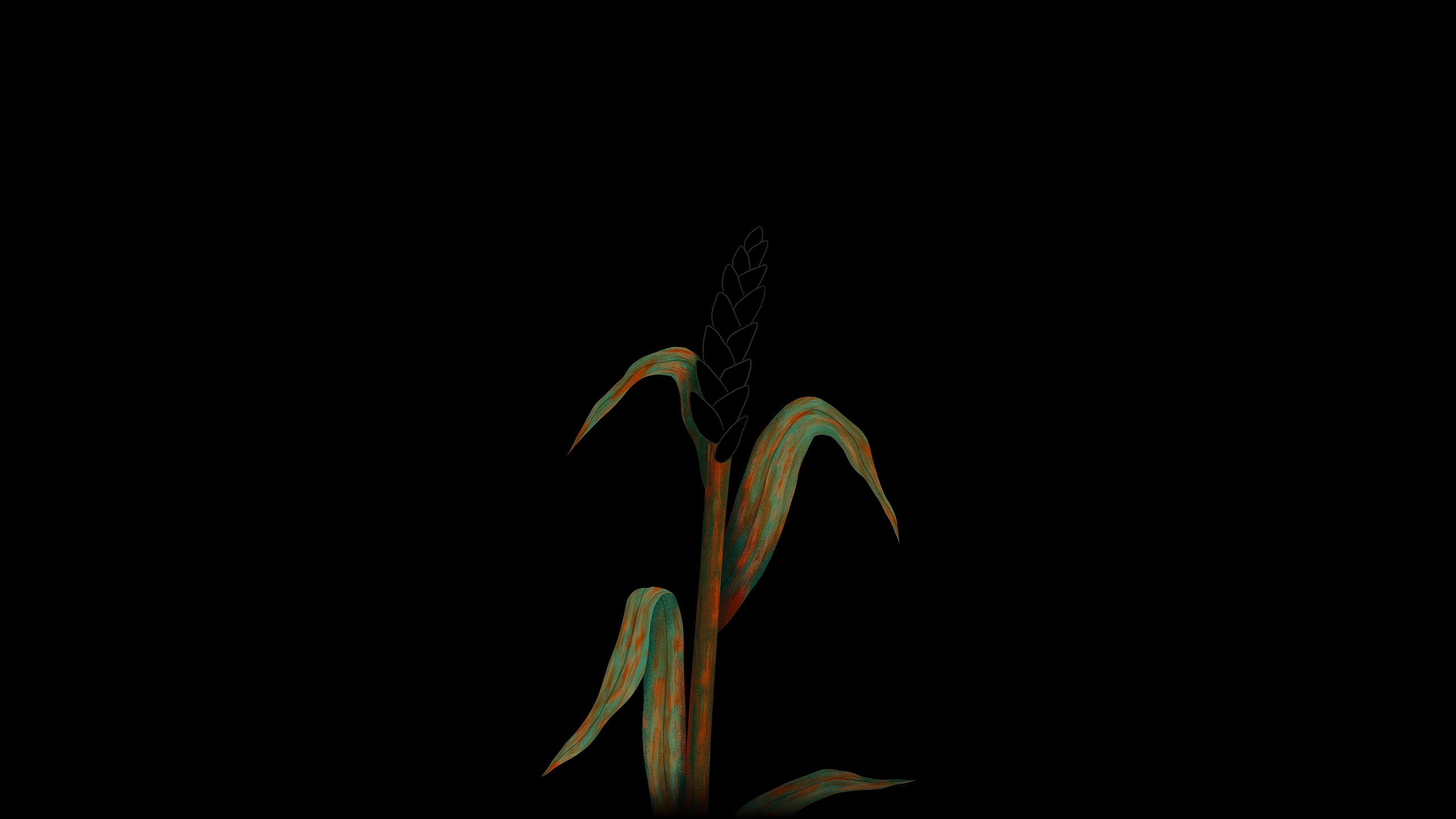
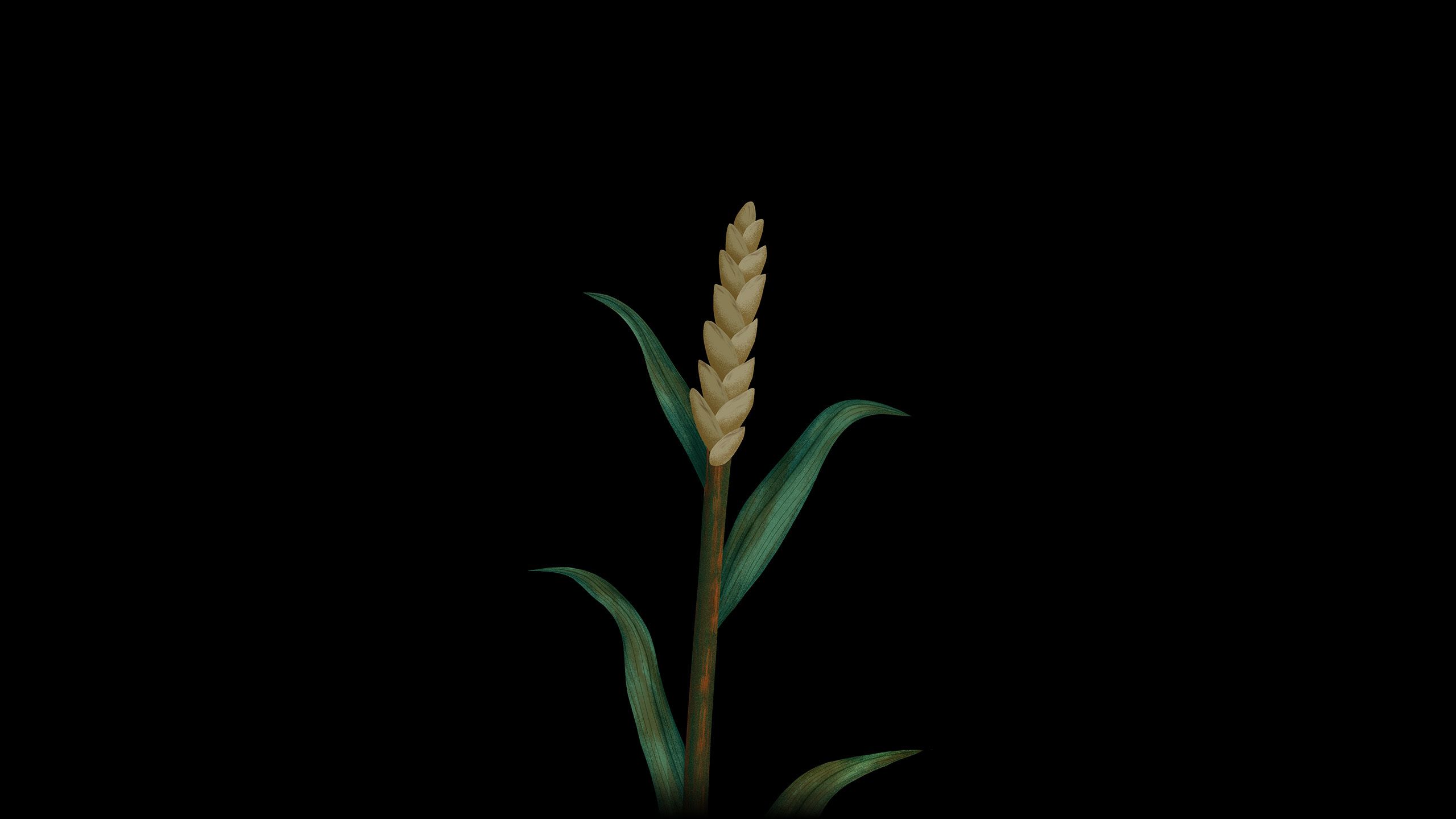
Wheat accounts for nearly a fifth of the world’s calorie production, and a crop pandemic could have led to unprecedented levels of starvation.
Stem rust didn’t just disappear—it was neutralized by deploying strategic crop breeding on an international scale.


Wheat accounts for nearly a fifth of the world’s calorie production, and a crop pandemic could have led to unprecedented levels of starvation.
Stem rust didn’t just disappear—it was neutralized by deploying strategic crop breeding on an international scale.
Challenges like this are becoming increasingly common, as stressors on food systems multiply.

Challenges like this are becoming increasingly common, as stressors on food systems multiply.

Fortunately, solutions to these global threats to agriculture exist in the genetic diversity of plants, and in the genebank facilities that safeguard and cultivate that diversity.

Fortunately, solutions to these global threats to agriculture exist in the genetic diversity of plants, and in the genebank facilities that safeguard and cultivate that diversity.

To defend against future crises, agricultural biodiversity and genebanks must be prioritized as strategic assets before it is too late.
THE NATURE OF STRENGTH
Creating a More Secure Future
with Agricultural Biodiversity
By Zane Swanson and Caitlin Welsh | June 11, 2025
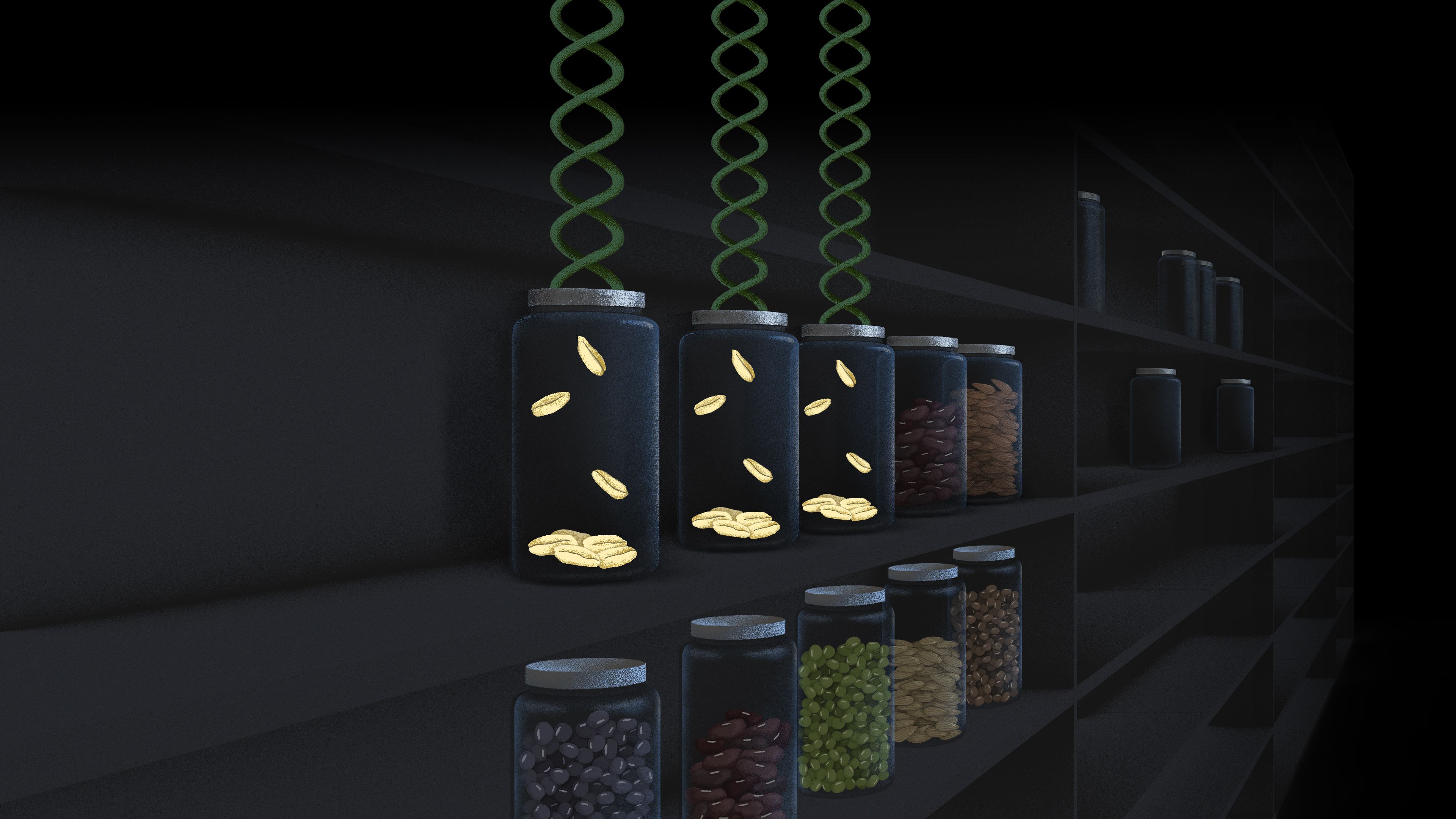
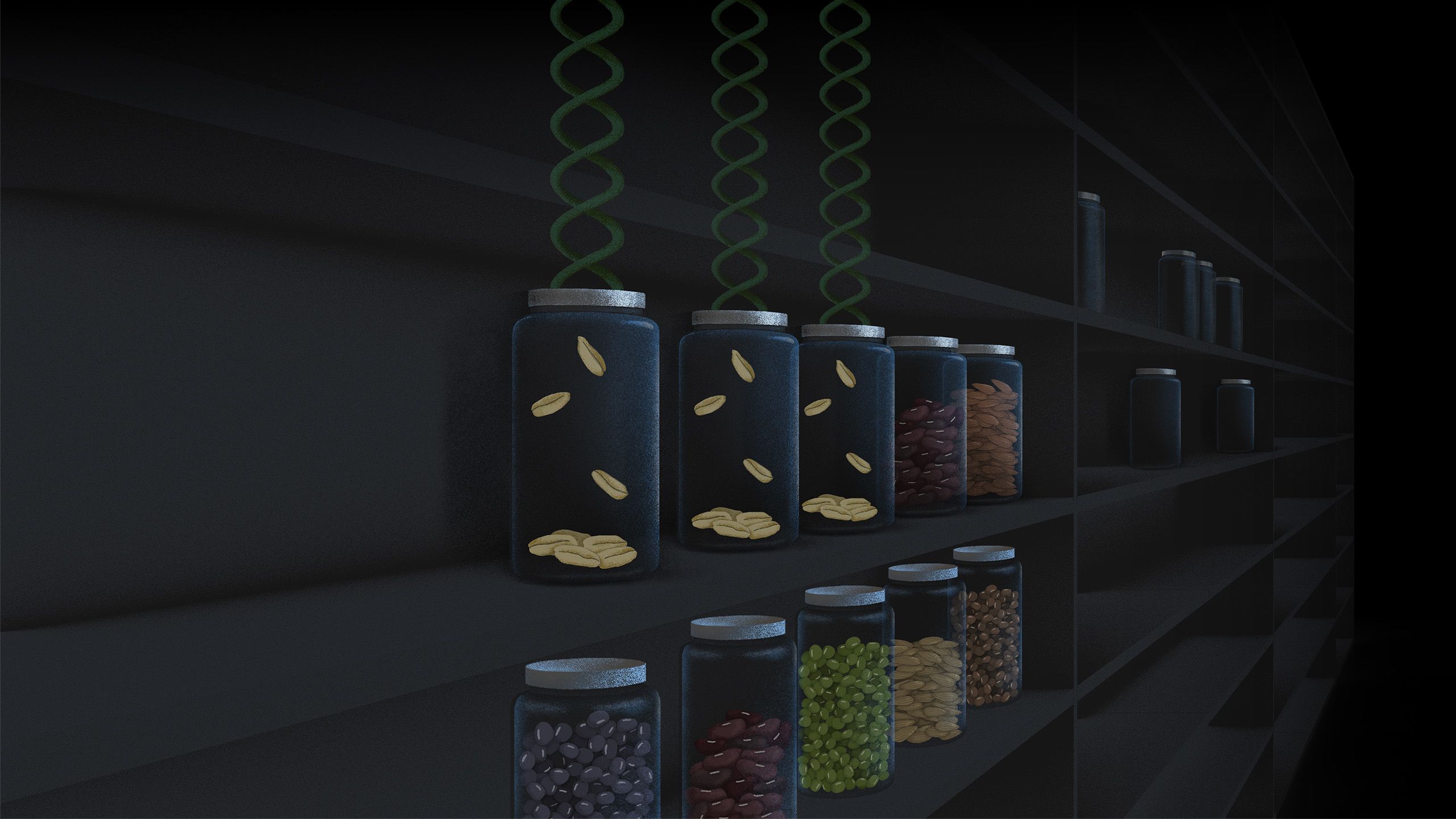
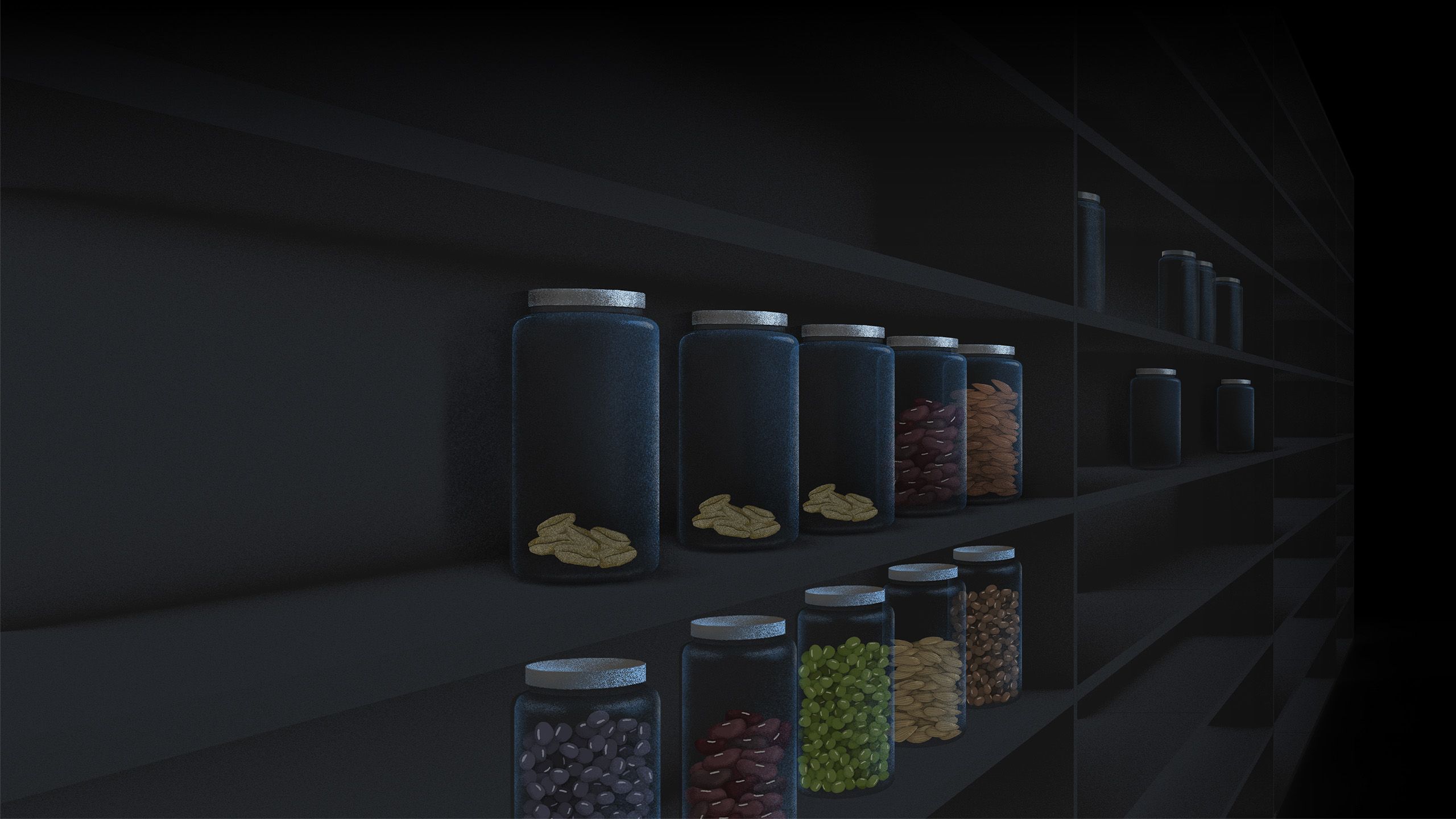
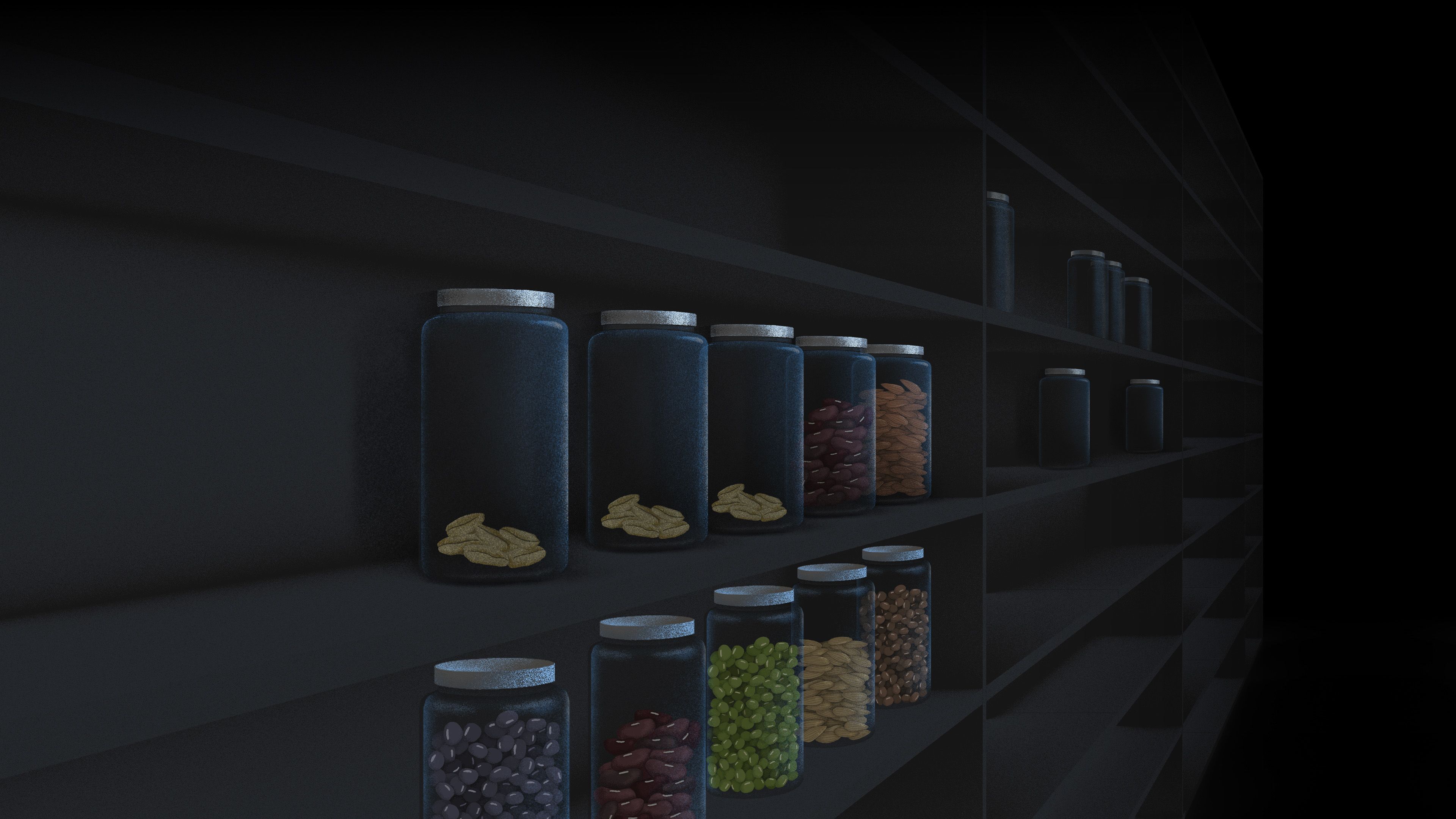
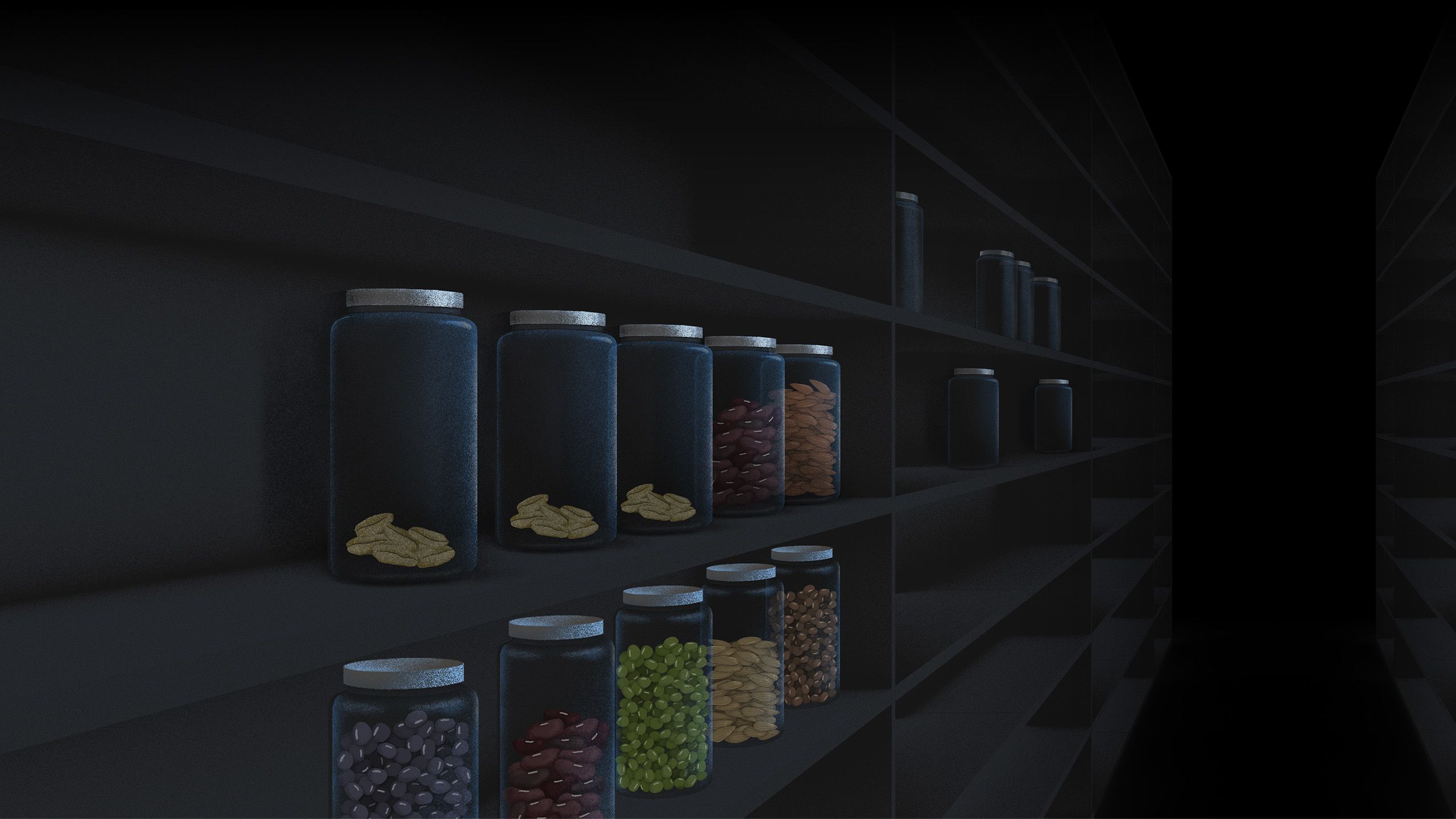
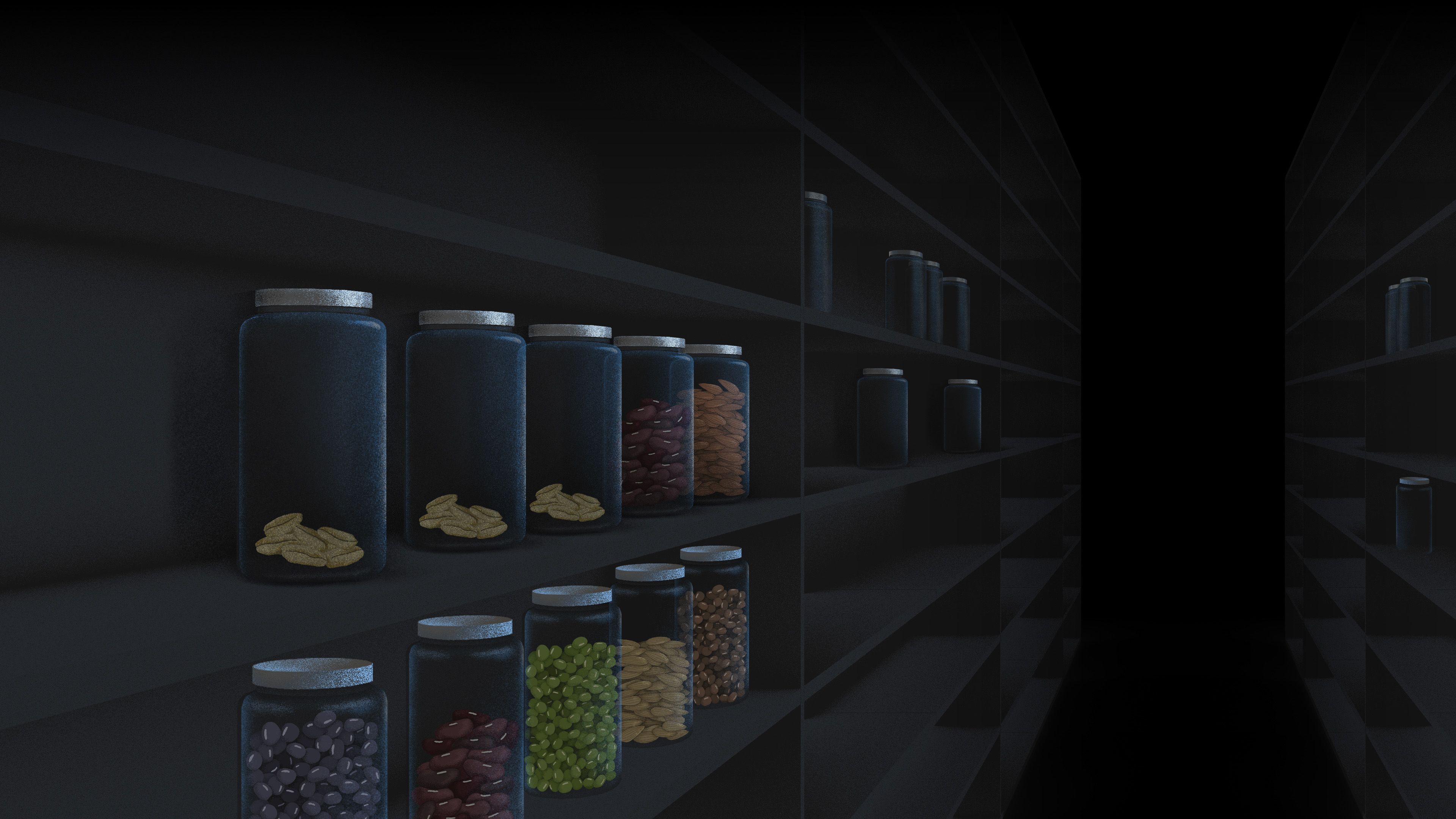


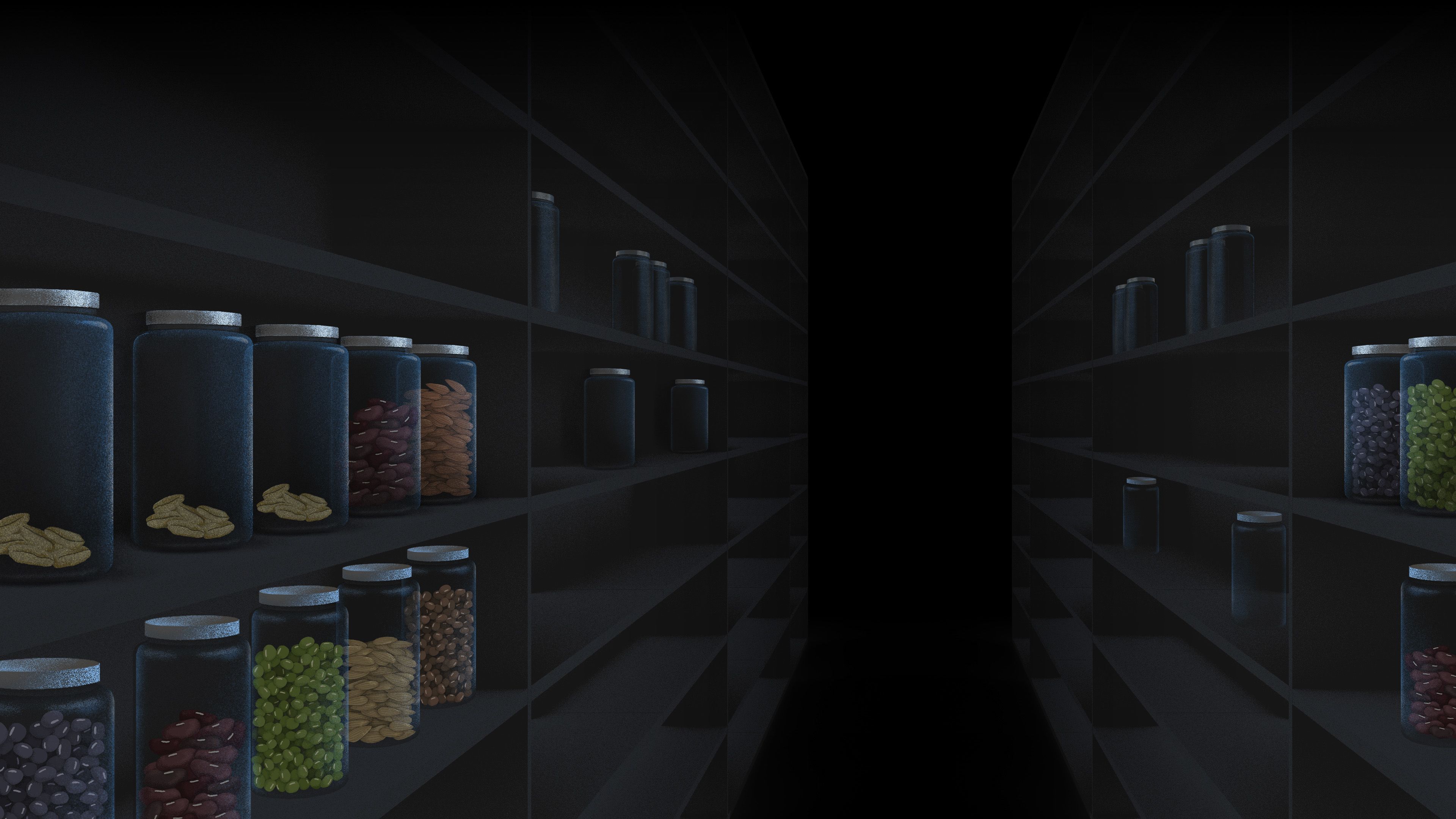

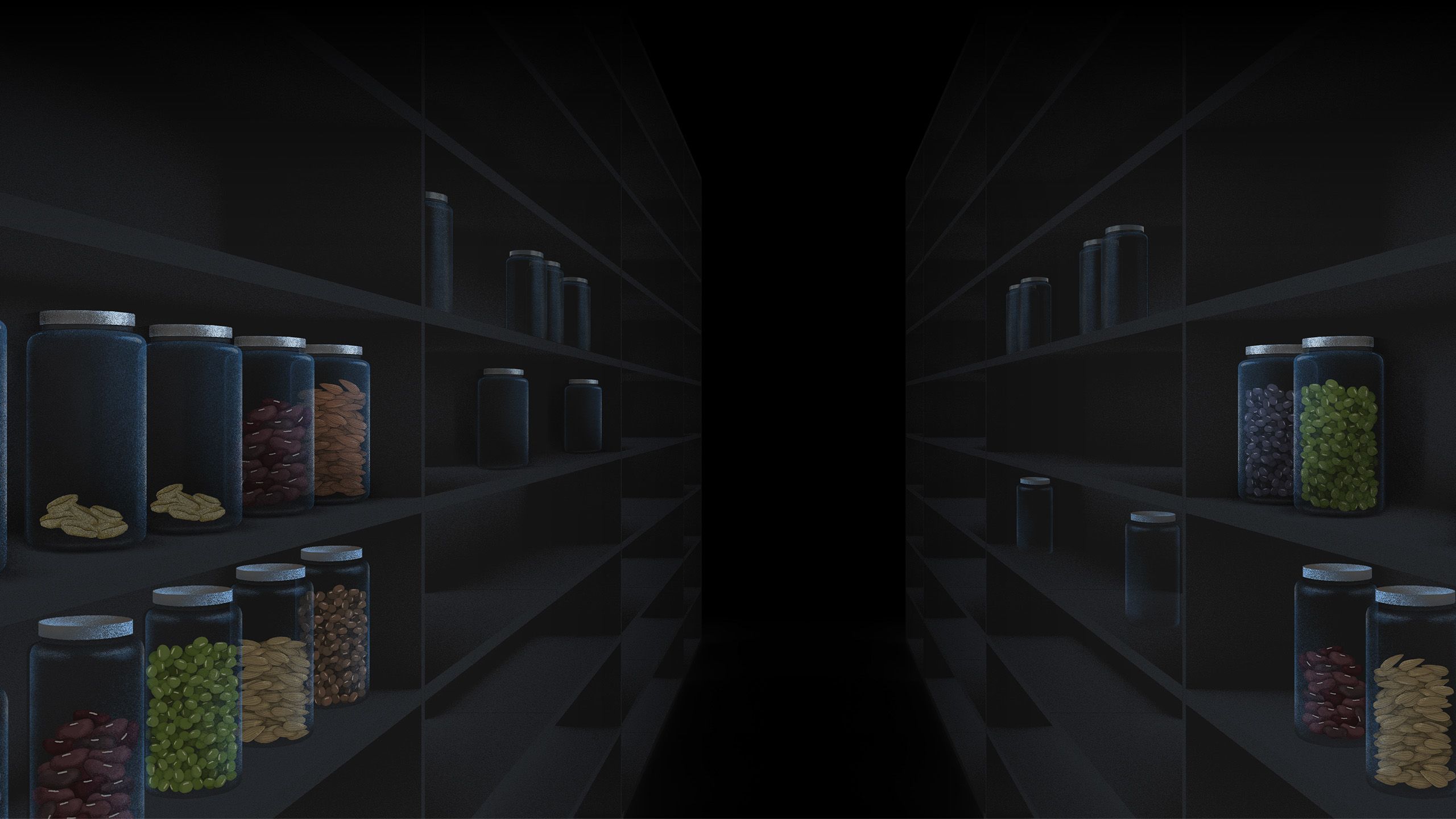

To defend against future crises, agricultural biodiversity and genebanks must be prioritized as strategic assets before it is too late.
THE NATURE OF STRENGTH
Creating a More Secure Future with Agricultural Biodiversity
By Zane Swanson and Caitlin Welsh | June 11, 2025












Humanity Cannot Survive Without Resilient Agriculture
Today, there are more threats to agricultural production than ever. If these threats are not properly prioritized at the national and global levels, the world risks agricultural collapse.
Despite the enormous success of revolutionized agricultural production in the twentieth century, increasing demands from growing, urbanizing, and food-insecure populations are testing vulnerable agricultural systems.
Agriculture now finds itself in a race to adapt to and overcome an increasingly hostile biological and environmental threat landscape.
I. Biological Threats
For farmers, existing and emergent diseases and pests are a constant hazard to their harvests. For the world, biological threats result in disrupted agricultural markets, unsafe foods, rising hunger, and a looming potential for global crop pandemics.
The agricultural losses sustained by outbreaks of plant diseases and pests range from 17 percent of annual global yields for potatoes to 30 percent for rice, amounting to nearly $300 billion in lost production.
II. Environmental Threats
Rising global temperatures, changing precipitation patterns, increasing pollution, and extreme weather events like drought, flood, and wildfire all reduce crop yields.
The economic impact of agricultural losses caused by environmental disasters is stark. Between 2008 and 2018, disasters cost more than $100 billion in agricultural losses across Africa, Latin America, and Asia alone. And environmental changes are predicted to reduce suitable croplands for more than 50 percent of all crops globally, indicating reductions in crop yields and nutrition.
While biological and environmental stressors pose existential risks to agriculture around the world, food security and human security depend on resilient agriculture systems.
“Food security exists when all people, at all times, have physical and economic access to sufficient, safe and nutritious food that meets their dietary needs and food preferences for an active and healthy life.”
Today, however, two and a half billion people around the world are not food secure.
The world’s population will approach 10 billion people in the latter half of this century. As the global population grows—in size and wealth—the world’s food demand will increase by as much as 56 percent by 2050.
Current systems of agriculture are ill-equipped to meet this demand. Should the external stressors that threaten agriculture overwhelm production, the results would be catastrophic hunger, while food insecurity will continue to contribute to social and political instability. Diversity in agriculture is an essential element of defense against this future.
Securing the Future of Agriculture Through Genebanks
Food security cannot exist without agricultural biodiversity.
Biodiversity is the foundation of agriculture. Diverse genes and species of plants are essential for developing more nutritious, robust, and resistant varieties of crops. This improves not just food security for people worldwide, but the economic security of farmers, regions, and countries around the world.
However, decades of consolidation across the food system have eroded agricultural biodiversity, or agrobiodiversity, more quickly than at any time in human history.
This decline in biodiversity deprives agriculture of the diverse genetic resources needed to build resilience to threats and also forestall future losses.
Agrobiodiversity loss weakens farmers’ ability to react to external hazards, while robbing them of the genes that could confer new resilience. It is here that genebanks play a vital role.
National and international genebanks and seed banks provide the infrastructure and expertise to fight back against the many forms of agricultural annihilation. They collect, manage, preserve, and distribute the fundamental raw materials of plant life.
Researchers, crop breeders, and farmers use these plant genetic materials to study overlooked varieties and search for unidentified genes that can fend off biological threats and overcome environmental degradation. In this way, genebanks offer resilience and opportunity to the entire agricultural industry.
Globally, there are more than 1,750 genebanks across national, regional, and international levels, which collectively preserve 7.4 million crop and plant accessions (samples). Svalbard Global Seed Vault, located in the Norwegian Arctic, serves the ultimate safeguard for this biodiversity, conserving 1.33 million samples of plant genetic materials shared across the worldwide genebank network.
The agrobiodiversity stored in these genebanks is being used to mitigate threats facing several of the world’s most important crops.
The Threat Landscape:
Critical Applications of Biodiversity
Click on a crop to learn about the threats it faces and how the global agricultural community is innovating to protect it through agrobiodiversity.




Wheat
(Triticum spp.)
THREAT: BIOLOGICAL—FUNGAL
INNOVATION: WHEAT STEM RUST (UG99) RESISTANCE
Wheat is one of the world’s most important crops, covering more agricultural land than any other food crop and serving as a staple food for more than one-third of the world’s population.
Stem rust is a devastating fungal disease that occurs globally and can result in significant yield losses that can approach 100 percent. In 1998, a new strain of stem rust, Ug99, emerged in East Africa that was lethal to nearly all previously resistant varieties of wheat.
The existential threat that Ug99 posed led experts from around the world to enhance surveillance efforts and assessments of current Ug99 vulnerability.
A technical assistant at the Institute for Resistance Research and Stress Tolerance of the Julius Kühn-Institut (JKI), searches for ears affected by fungi in a wheat field. | Klaus-Dietmar Gabbert/picture alliance via Getty Images
A technical assistant at the Institute for Resistance Research and Stress Tolerance of the Julius Kühn-Institut (JKI), searches for ears affected by fungi in a wheat field. | Klaus-Dietmar Gabbert/picture alliance via Getty Images
Simultaneously, the evaluation of extensive collections of diverse wheat genetic materials—there are more than 500,000 samples stored in genebanks globally—led to the identification of Ug99-resistant genes and breeding efforts for enhanced Ug99 resistance.
With disaster averted, preventative efforts continue. Every year, improved varieties of wheat that boast resistance to Ug99 and other strains of stem rust avert billions of dollars in lost harvests.
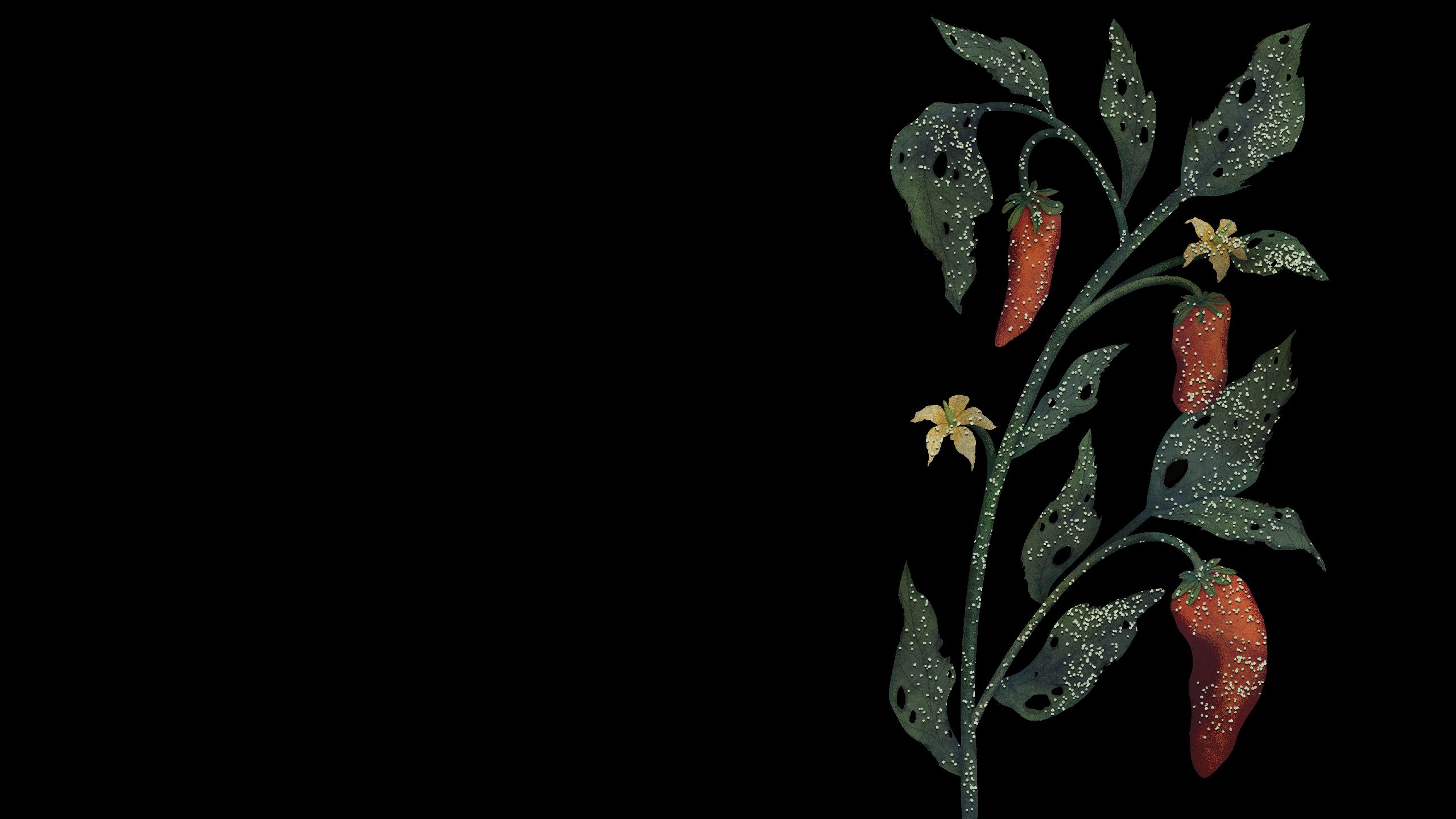
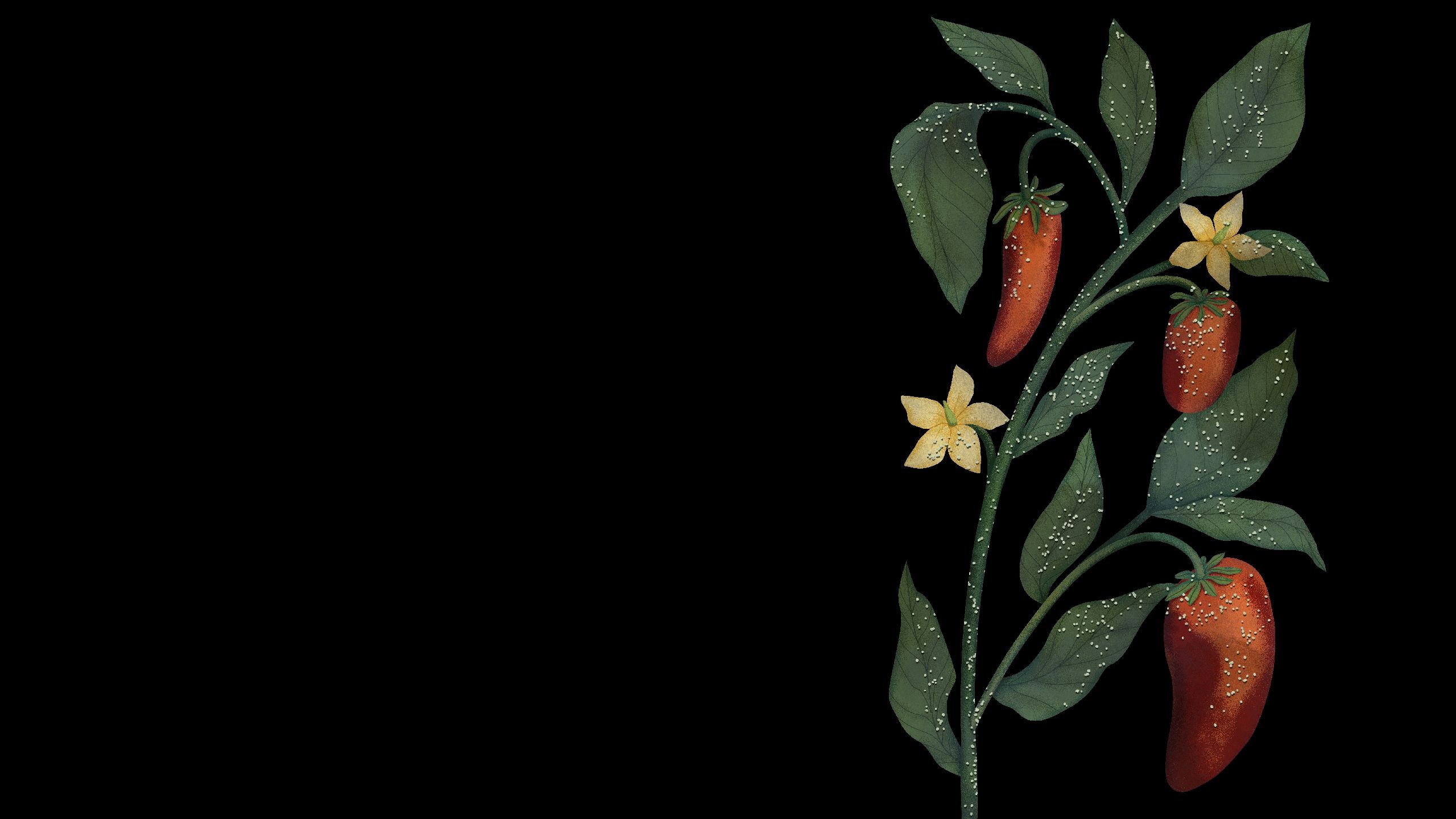


Chili Peppers
(Capsicum spp.)
THREAT: BIOLOGICAL—PESTS
INNOVATION: THRIPS RESISTANCE
Chili peppers are increasingly one of the world’s most economically important crops, with one fourth of the population consuming chilies daily and global production doubling since the year 2000.
While the agricultural importance of chilies grows, pests such as thrips and mites pose a severe risk to production globally.
Thrips are a particularly devastating pest for many fruit and vegetable crops. In chili peppers, they cause direct damage to leaves, flowers, and fruit, while also serving as a vector for plant viruses. Tospoviruses, which are transmitted by thrips, can result in yield losses ranging up to 60 percent and millions of dollars in losses.
Close-up of a chili plant affected by thrips. | Tri Kuntoro via Getty Images
Close-up of a chili plant affected by thrips. | Tri Kuntoro via Getty Images
Though many pests are controlled with chemical agents, thrips populations quickly develop resistance to insecticides, intensifying the need to develop natural resistance in chili varieties.
To overcome this constant and evolving pest threat, researchers from institutes like the World Vegetable Center continue to evaluate chili varieties collected from around that world, identifying the genes and traits that increase insect resistance to produce improved varieties.
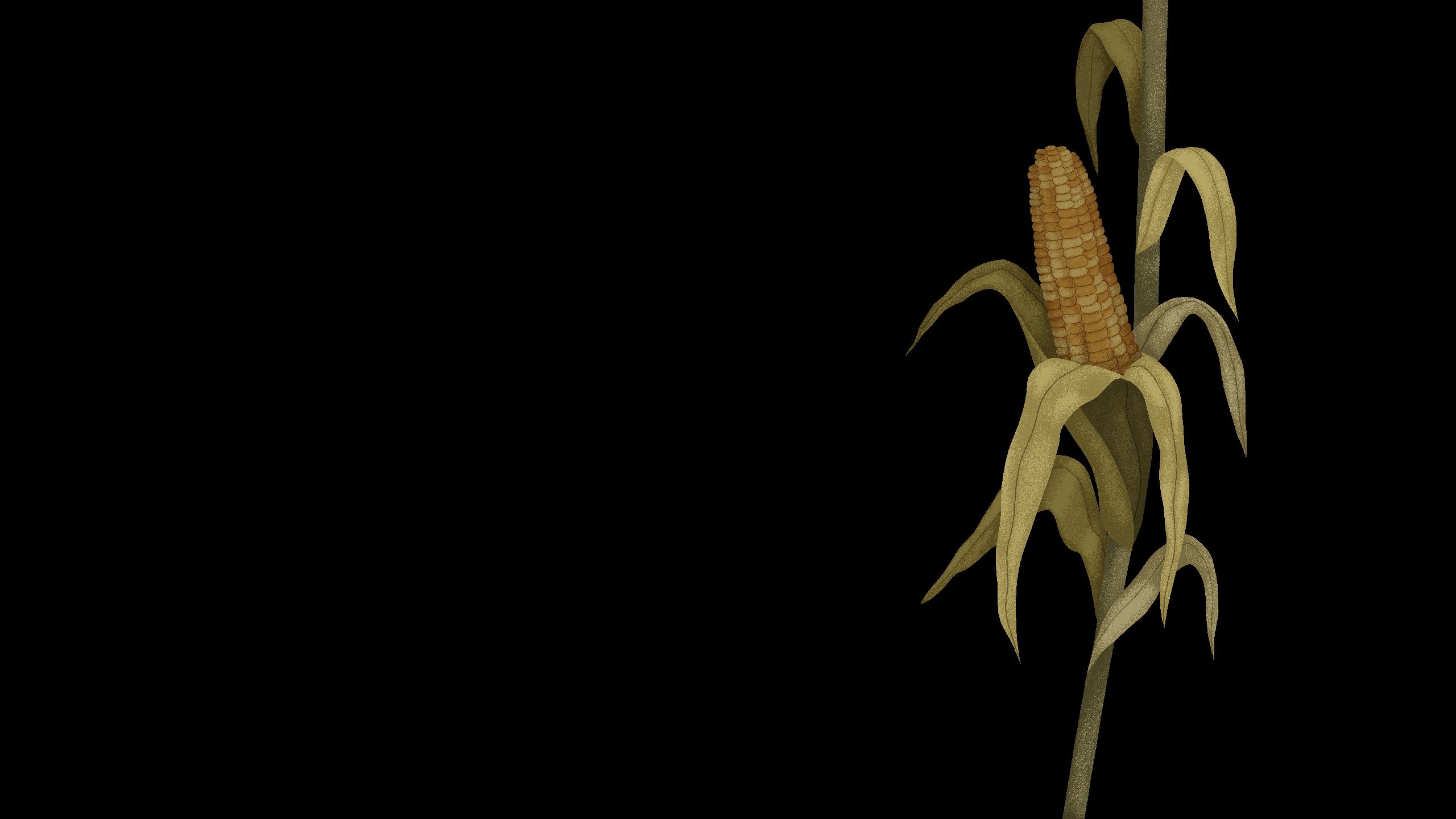
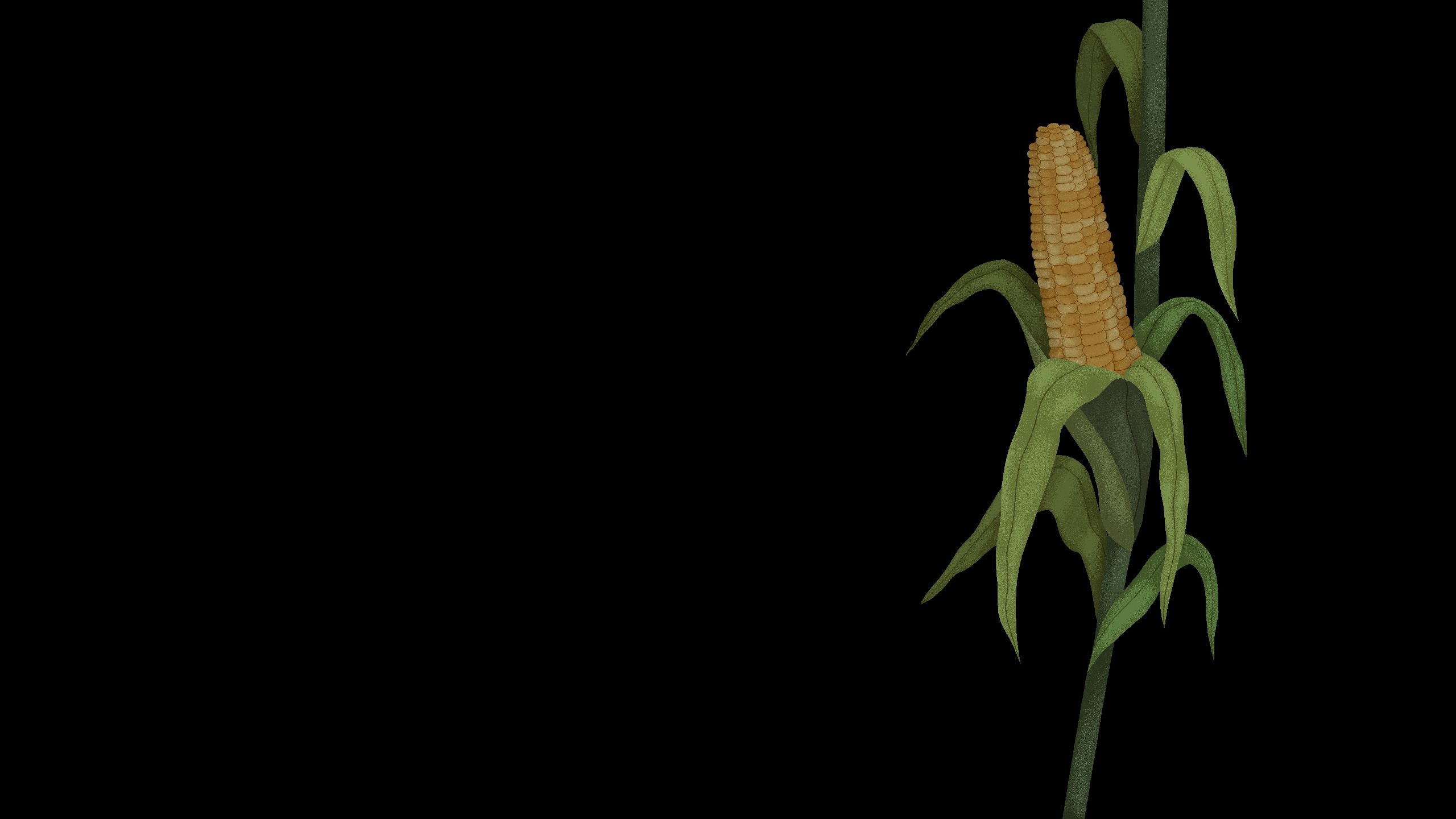
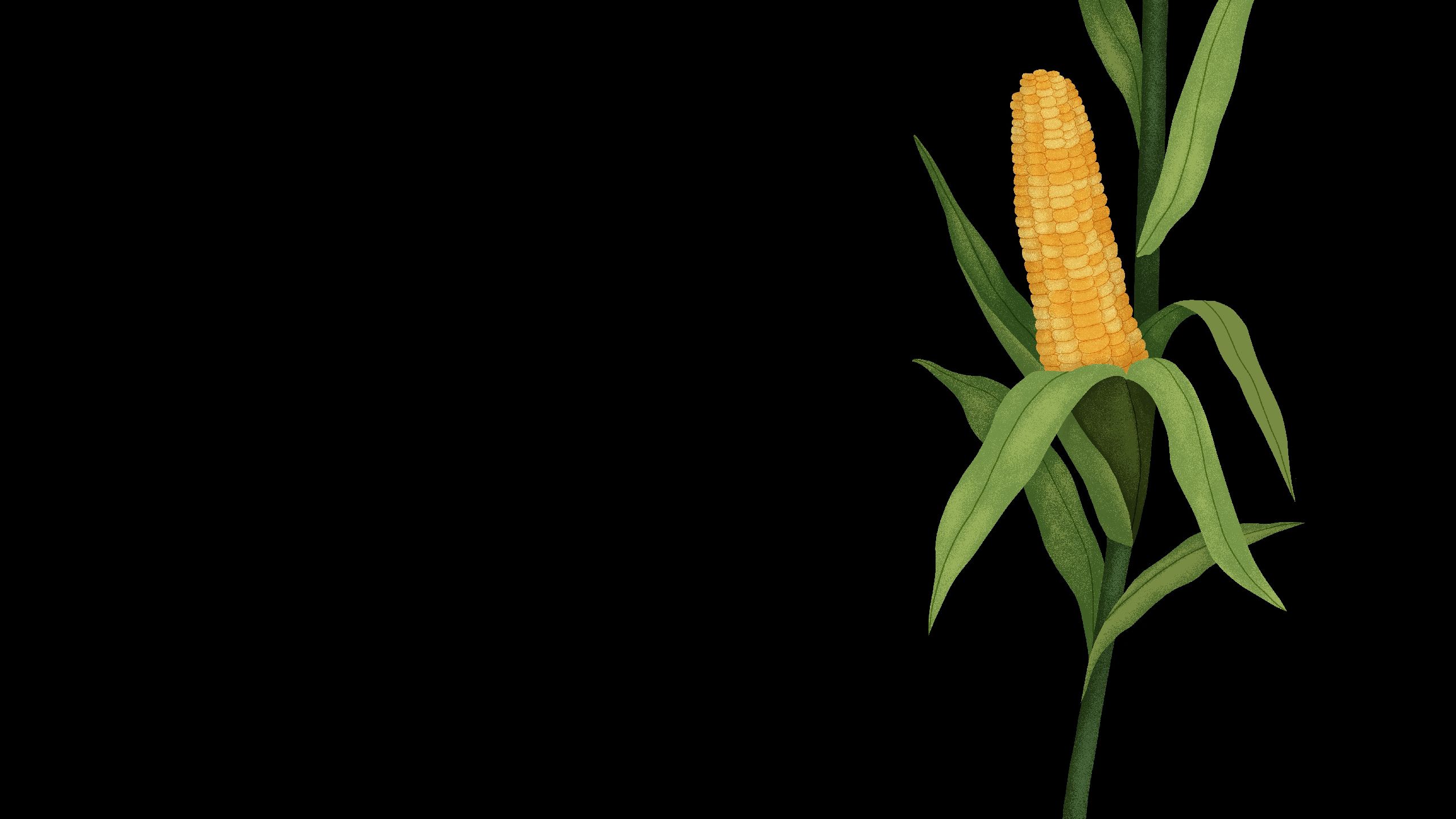

Maize
(Zea mays ssp.)
THREAT: ENVIRONMENTAL—DROUGHT
INNOVATION: DROUGHT-TOLERANT MAIZE
Maize accounts for one-quarter of the calories produced in the world and is the primary staple crop for nearly one billion people globally.
Maize is highly vulnerable to drought, however. In sub-Saharan Africa, drought already results in yield losses of 15–20 percent per year. Locally, these losses can increase to between 30–90 percent depending on the duration, timing, and severity of the drought.
The world is predicted to face droughts of increasing frequency, duration, and severity, further threatening a growing and changing global population that is also expected to demand twice as much maize by 2050.
Corn grows in a field in Santa Fe, Argentina, an area that experienced a two-year drought. | Ricardo Ceppi via Getty Images
Corn grows in a field in Santa Fe, Argentina, an area that experienced a two-year drought. | Ricardo Ceppi via Getty Images
In the face of these challenges, the use of existing plant genetic resources and emerging scientific techniques to produce new and improved varieties of maize has stood as a triumph of public and private sector action. These efforts relied significantly on the more than 100,000 genetic samples stored across genebanks.
Drought-tolerant varieties first became available to U.S. farmers in 2011. As of 2021, seeds for improved maize varieties have been distributed to nearly 9 million farmers across sub-Saharan Africa, increasing yield by 15 percent while reducing the likelihood of crop failure by 30 percent in Uganda.




Cassava
(Manihot esculenta)
THREAT: BIOLOGICAL—VIRAL
INNOVATION: BROWN STREAK DISEASE RESISTANCE
Cassava is the world’s fourth most important staple crop, providing a vital source of carbohydrates for more than 800 million people.
Globally, cassava production is threatened by cassava brown streak disease (CBSD), which devastates vulnerable cassava varieties, resulting in poorer quality roots and near-total yield loss.
These losses, in yield and nutritional value, have major ramifications for food security in Central and East Africa.
Women select cassava tubers on a production site of "attieke", a side dish made from cassava, in Affery, Côte d'Ivoire. | Sia Kambou/AFP via Getty Images
Women select cassava tubers on a production site of "attieke", a side dish made from cassava, in Affery, Côte d'Ivoire. | Sia Kambou/AFP via Getty Images
In response to CBSD, networks of researchers are turning to diverse traditional varieties for the genes that confer increased resistance. The genomes of Tanzanian varieties and wild plant relatives, as well as Brazilian cassava varieties, have been used to develop a more resilient cassava variety.
Distressingly, a new strain of CBSD is now threatening previously resilient cassava varieties and spreading into new regions across sub-Saharan Africa, necessitating an increased focus on breeding new, improved varieties.





Rice
(Oryza spp.)
THREAT: ENVIRONMENTAL—FLOOD
INNOVATION: SUBMERGENCE TOLERANT RICE
Rice is the staple food for more than half of the world’s population. Globally, rice accounts for 21 percent of the per capita energy consumption annually.
Flooding and excessive rainfall result in significant rice yield losses around the world, as most cultivated varieties of rice die within just a week of complete submergence. Rice losses due to flooding amount to more than $1 billion annually in South and Southeast Asia alone.
Aerial view of flooded rice plantations in Eldorado do Sul, Rio Grande do Sul state, Brazil, taken on May 9, 2024. | Nelson Almeida/AFP via Getty Images
Aerial view of flooded rice plantations in Eldorado do Sul, Rio Grande do Sul state, Brazil, taken on May 9, 2024. | Nelson Almeida/AFP via Getty Images
To overcome this risk, international teams of researchers and crop breeders have spent decades combing through the genes of diverse rice samples to identify those that coded for prolonged flood tolerance. This work led to the discovery of the Sub1 gene, which allows rice to grow even after being submerged for two weeks.
Originally distributed across rice-growing regions in India, Bangladesh, and Nepal, new varieties of rice with the Sub1 gene were recently distributed to more than 30,000 farmers in Nigeria.
Flooding is also linked to saltwater intrusion—a significant and growing threat to rice yields that can result in production declines of 30–50 percent.
To solve this, plant breeders tapped into the genetic resources of more than 100,000 rice varieties and identified a gene for salinity tolerance, Saltol.
Sourced from a diversity of traditional rice varieties—many of which are on the verge of being lost—the Saltol gene has been introduced into modern rice varieties, more than doubling yields in saline soils and buffering rice production for the millions of coastal smallholder rice farmers.




Banana
(Musa acuminata)
THREAT: BIOLOGICAL—FUNGAL
INNOVATION: PANAMA DISEASE RESISTANCE
The world produced more than 139 million metric tons of bananas in 2023, making it one of the world’s most consumed fruits.
Bananas are not only an important source of agricultural income but also a staple food that contributes to local food security. Globally, about 400 million people rely on bananas for 15–27 percent of their caloric intake.
Today, however, a lethal strain of Panama disease or Fusarium wilt, called Tropical Race 4 (TR4), threatens 80 percent of banana production with extinction.
TR4 is already understood to be one of the most destructive fungal diseases in the history of agriculture. As of 2019, the economic impact of Panama Disease was estimated to have eclipsed $18 billion.
A grove of bananas affected by Panama disease in Hawaii. | Scot Nelson via Flickr
A grove of bananas affected by Panama disease in Hawaii. | Scot Nelson via Flickr
With the threat of TR4 looming ever larger, researchers have been working to identify genes in other varieties of bananas and inedible wild relatives stored across genebanks and in the wild that could provide increased resistance.
Testing is underway for a new resistant Cavendish banana in Australia and a resistant hybrid banana in the Netherlands, each effort pulling genes and traits from around the world to develop entirely new varieties.
Cultivating Biodiversity in the Field and in the Lab
The conservation of agrobiodiversity is essential not only to agricultural production, but the livelihoods of nearly 3.8 billion people who rely on agriculture for their incomes.
Producing enough food for the future in a sustainable way requires novel tools that allow farmers to grow more, healthier crops with fewer environmental impacts that threaten their next harvests. Here, agrobiodiversity offers both resilience and opportunity for the farmers, consumers, and economies of the world.
Agrobiodiversity enables the development of new, high-quality crop varieties, and generates better yields and better nutrition—while requiring fewer inputs.
Agrobiodiversity is not just an environmental characteristic to be protected, but a strategic asset to be employed on the farms and in the labs. From it, farmers and researchers are developing the crops that will safeguard a future where uncertainty is certain.
The following recommendations offer a path to secure this future:
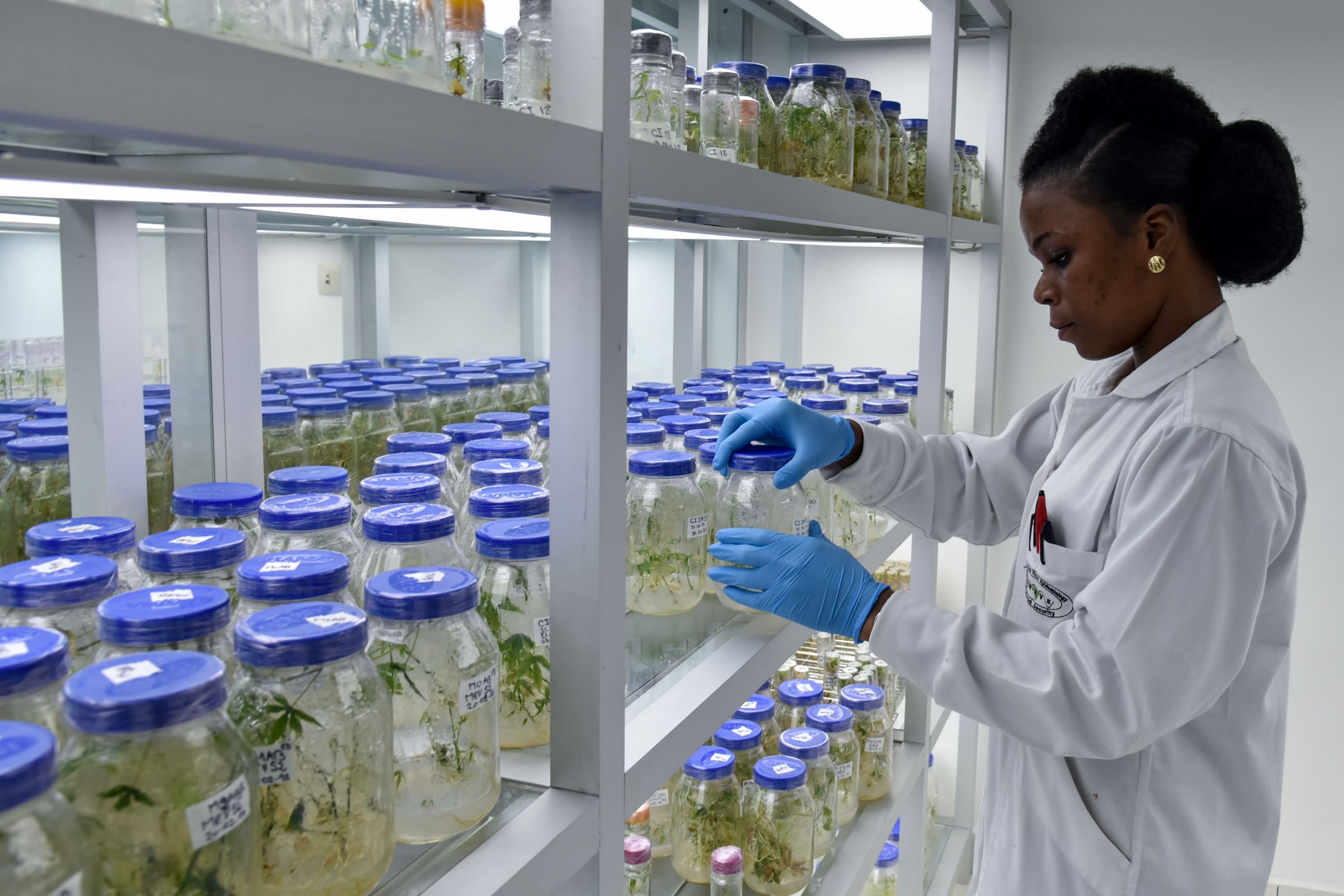

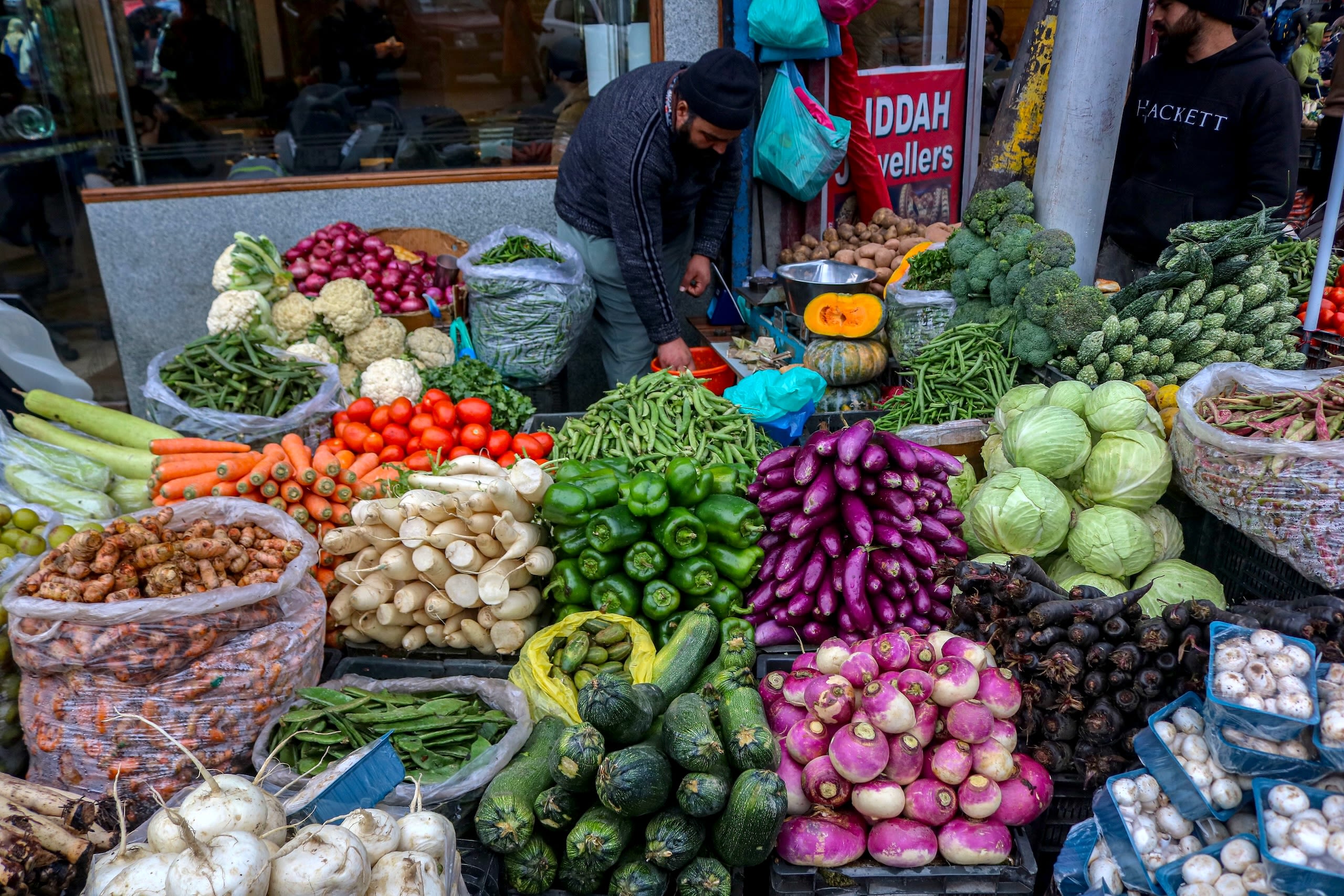
RECOMMENDATION 1:
Strategically protect and fund genebanks.
Agrobiodiversity is critically important—and exceedingly vulnerable. Varieties that are lost take with them unique genetic materials that can never be retrieved.
Genebanks are increasingly under political and physical threat. Without support to safeguard crop genetic resources—and the institutions, people, and systems that preserve them—the ability to weather biological and environmental threats to agriculture will be diminished.
It is incumbent on the public sector to sustain funding to preserve agrobiodiversity across a robust system of genebanks, and enable the use of agrobiodiversity by food producers.
RECOMMENDATION 2:
Incorporate agricultural biodiversity into national security risk assessments and post-conflict stabilization strategies.
Agrobiodiversity loss can contribute to food insecurity, which can contribute to social and political instability and violence, threatening national security. And the loss of agrobiodiversity itself can trigger national security concerns.
At the same time, supporting agriculture, including agrobiodiversity, can help stabilize populations post-conflict. The rapid deployment of agricultural aid—including diverse, high-quality seeds—during and after shocks is vital to the provision of relief for farmers, food for populations, and stability for fragile states.
For these reasons, the state of agriobiodiversity should be considered in pre-conflict assessments by defense actors, as well as post-conflict interventions by the defense and development communities. Because conflict can degrade agrobiodiversity, these communities should make the best efforts to preserve agrobiodiversity amid violence.
RECOMMENDATION 3:
Encourage biodiversity on the farm and on the plate.
Today, 2.8 billion people cannot afford the least expensive healthy diet. Lack of access to diverse foods is a limiting factor in addressing the affordability of healthy diets and malnutrition, including the hidden hunger of micronutrient deficiencies. Malnutrition can contribute to physical and cognitive impairment, leading to reduced educational and economic outcomes for individuals and diminished economic growth for countries.
Utilizing plant genetic materials for the development of biofortified crops, which are bred to have increased nutritional value, is an important strategy for increasing access the nutrition globally. Examples of biofortified crop varieties that are already making a difference include:
In addition to biofortified varieties, so-called “opportunity crops”—those often lesser-known, but nutritionally dense and locally adapted plants—offer economic advantage for farmers and nutrition security for local communities. Frameworks like the Vision for Adapted Crops and Soils developed at the U.S. Department of State demonstrate policies that center agrobiodiversity within global development strategies.
Protecting and enabling the use of biodiverse natural resources can help reduce malnutrition and help farmers adapt and flourish.
Conclusion
There is one industry that feeds all 8 billion people on this planet: agriculture. Yet, the threat of agricultural collapse is not adequately appreciated as a threat to global security. And the need to bolster agriculture against the coming challenges is more urgent than ever.
Navigating a landscape of emerging risks, while ensuring the world’s food supply, requires reevaluating agrobiodiversity for its strategic importance in safeguarding the food and economic security of all nations. These growing challenges necessitate reframing the scope and scale of risk, as well as the identification of strategies that leverage biodiversity to enhance resilience.
The ultimate defense for agriculture’s emerging threat landscape lies in the plant genetic resources developed across millions of years of evolutionary history and millennia of agricultural practice.
National and international networks of genebanks stand as living libraries to store and study these resources. We must protect agrobiodiversity to support existing agricultural production and critical breeding efforts for the uncertain future we know will come.
This report is made possible by the generous support of the
Global Crop Diversity Trust (The Crop Trust).
Authors
Zane Swanson, Deputy Director, Global Food and Water Security Program
Caitlin Welsh, Director, Global Food and Water Security Program
Research Support: Joely Virzi
Special Thanks
David Michel, Rod Schoonover, and Gustavo Ferriera
iDeas Lab Story Production
Illustrations & concepts: Shannon Yeung
Implementation, photo research, & styling: Gina Kim
Development assistance: José Romero
Data visualizations, editorial, & project oversight: Sarah B. Grace
Copyediting support by: Madison Bruno & Hunter Hallman
Photo Credits
Solutions Section
1. A lab technician checks in vitro cultures of cassava (manioc), in a research centre on cassava, on June 27, 2018 in Bingerville, as part of the West African Virus Epidemiology (WAVE) project. | Sia Kambou / AFP via Getty Images
2. NATO heads of state participate in a Working Session of the NATO Summit at the Walter E. Washington Convention Center in Washington, DC, July 11, 2024. | Saul Loeb / AFP via Getty Images
3. A street vendor sells vegetables at a market in Srinagar, Jammu and Kashmir, on February 1, 2025. | Firdous Nazir / NurPhoto via Getty Images
4. An orange-fleshed sweet potato | HarvestPlus via Flickr
5. Vitamin A maize | Well Cabral on Unsplash
6. Iron-biofortified beans | Shelley Pauls on Unsplash


